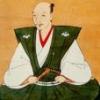-
Posts
964 -
Joined
-
Last visited
-
Days Won
4
Steve Waszak last won the day on September 8 2025
Steve Waszak had the most liked content!


Steve Waszak replied to Curran's topic in Tsuba

Steve Waszak replied to Grey Doffin's topic in Sword Shows, Events, Community News and Legislation Issues

Steve Waszak replied to Steve Waszak's topic in Tsuba

Steve Waszak replied to Steve Waszak's topic in Tsuba

